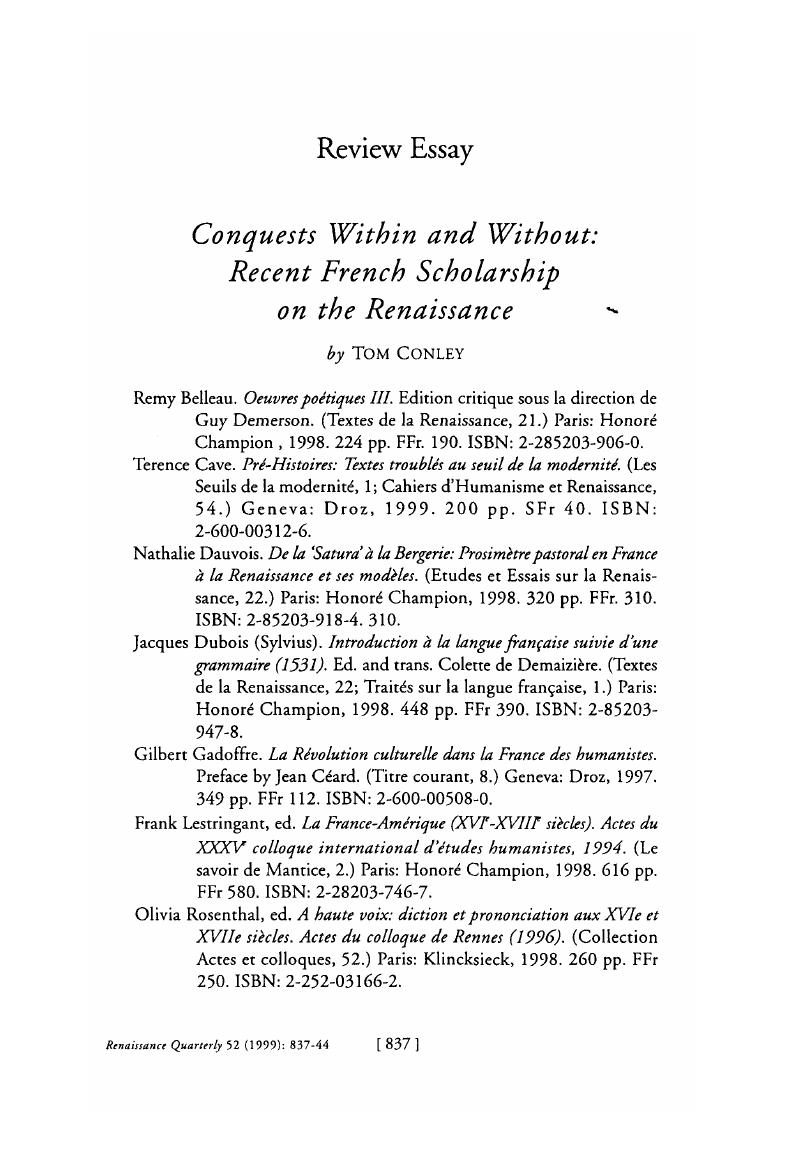No CrossRef data available.
Published online by Cambridge University Press: 20 November 2018

1 Two pathfinding works apply to the eighteenth and nineteenth centuries. In Une politique de la langue (Paris: Gallimard, 1975) Michel de Certeau, Dominique Julia, and Jacques Revel theorized a longstanding “politics of language” that moves between discovery of what is unknown in the nation and imposition upon it of an official ideolect. Their hypotheses are extended to the creation of popular culture in nineteenth-century institutions devoted to folklore and museology in “La beaute’ du mort,” in Michel de Certeau, La culture aupluriel (Paris: Seuil, 1993), 45-72.
2 Claude Longeon, ed., Premiers combats pour la langue francaise (Paris: Livre de Poche, 1989).
3 It would be appropriate to correlate the Lucretian strain of Montaigne's atomism in the affective distinction that a contemporary avatar, Gilles Deleuze, articulated in the “molar” and “molecular” aspects of the “rich inorganic life of things,” in Difference and Repetition, The Movement-Image, and other writings. Affect, sensation, and knowlege are conjoined in the aesthetic dimension of Lucretian thinking.
4 In La geographic de la Renaissance (1420-1620) (Paris: Bibliotheque nationale, 1980), Numa Broc observes that Miinster inaugurates a practice of cultural geography, in which national borders are loosely drawn along lines of linguistic division. The author literally maps movements of culture by studying discourses and spaces in the same matrix (studied in chapter four, in which descriptive cosmography is seen overtaking celestial cosmography by the 1550s).
5 Anglophone readers will welcome Graham Larkin's translation and richly illustrated edition of Thierry Mariage, The World of Andre1 Le Notre (Philadelphia: University of Pennsylvania Press, 1999), especially in chapters one and three.